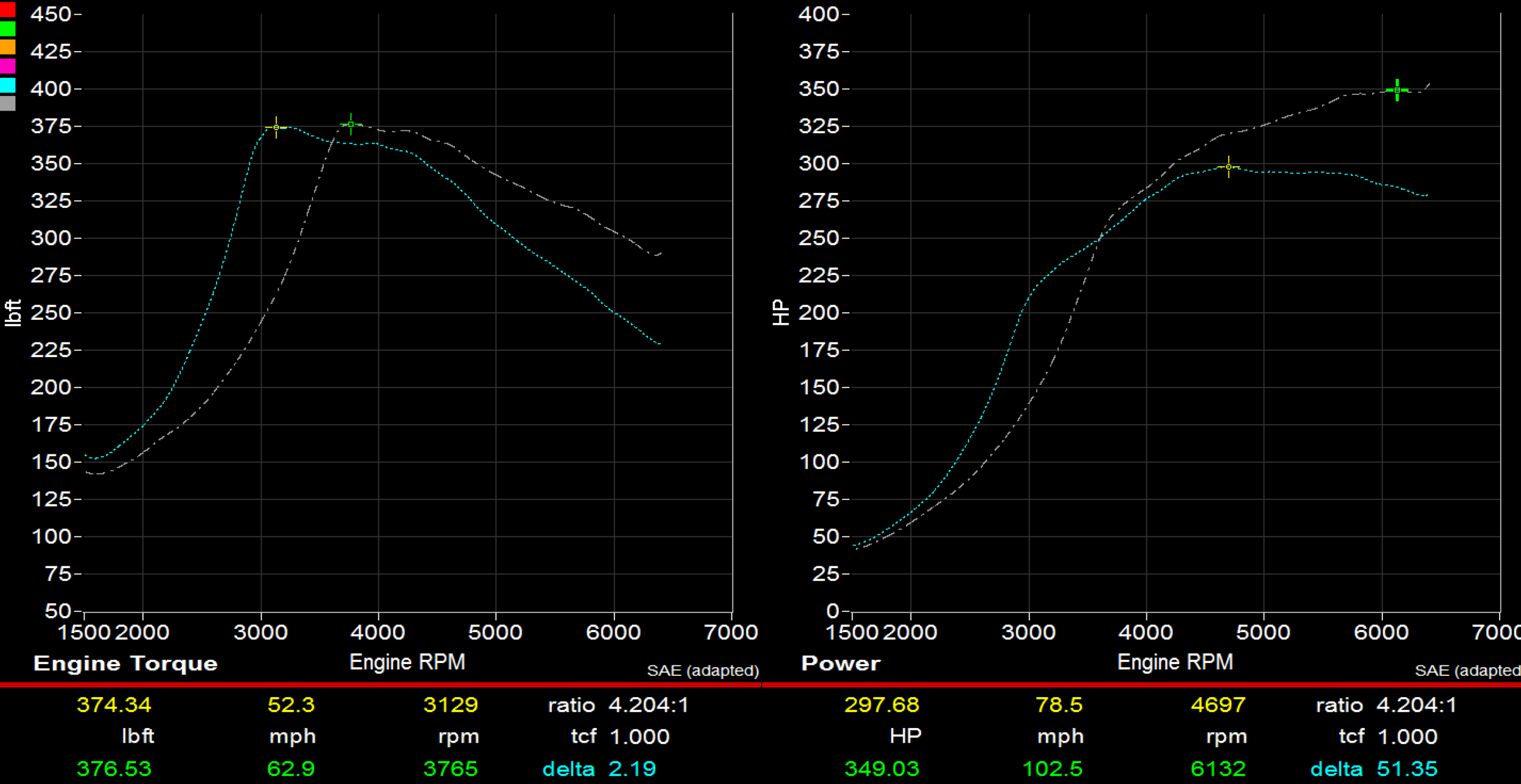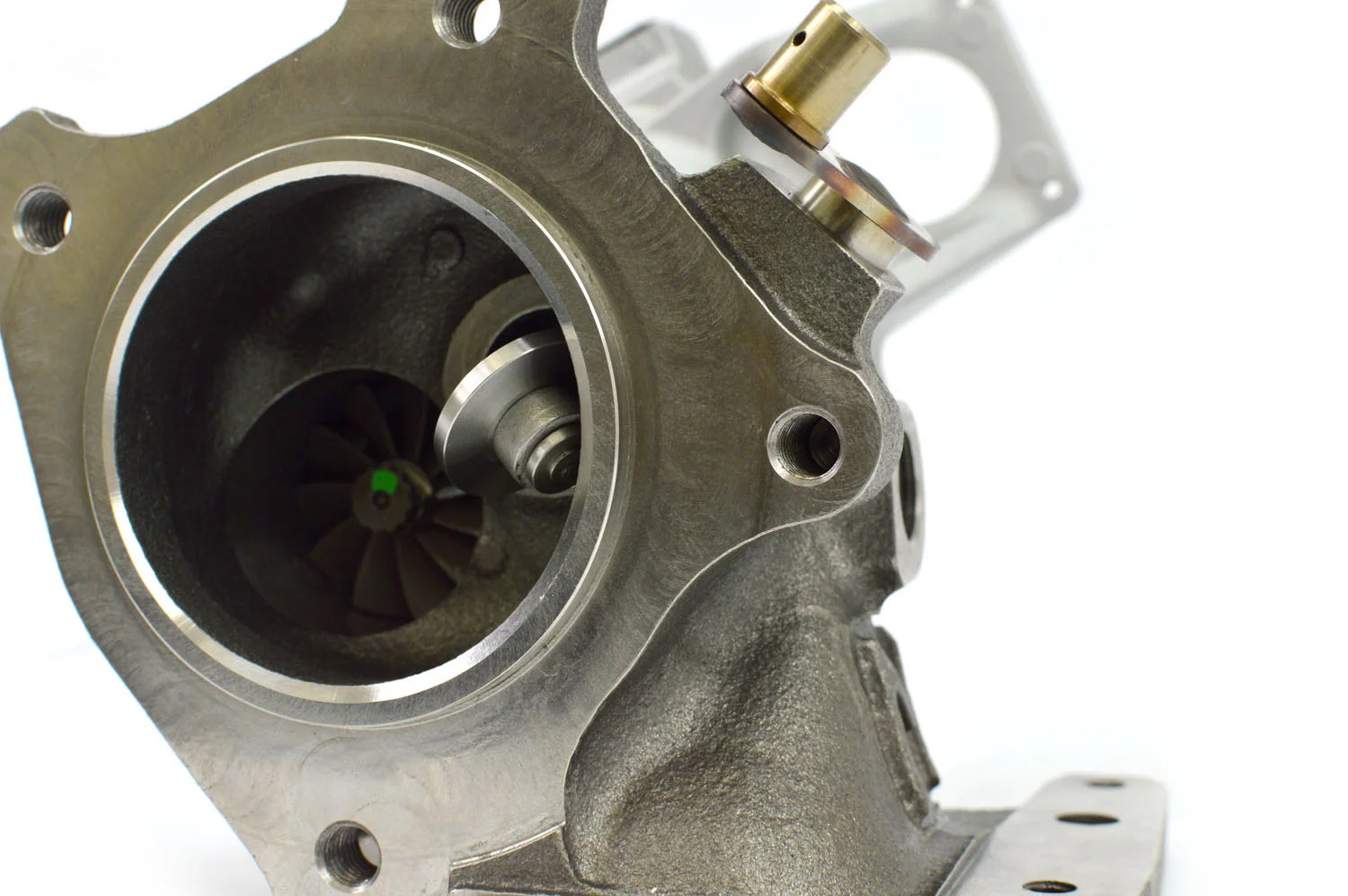How much HP can the W1 turbo make? Turbo Tech Talk
A few days ago we got a great question asked from an awesome customer. It was such a good question we felt compelled to share both the question and our response with our readers.
Question: “What hp is the 27WON W1 technically rated for?”
Some companies do upgrades based on how much you can get out of the compressor.”
Our Response:
This is a great question for two reasons:
Rating a turbo is not so cut and dry. The turbo is not a single part. It is a system of parts that both feed and is fed by the engine. Therefore, it is highly dependent on the engine application.
These are assumptions; just because other companies set power rating in reference to the compressor does not mean that this way of rating represents the turbos capacity or even the best way to rate the turbo’s capacity.
First off, we are not going to state what the 27WON W1 is rated for but instead state what our target was in the design process. We wanted to design a turbo with fast response and a flat horsepower curve in the upper RPM range vs the stock turbo’s severe fall off after 5200rpm. With these considerations we expected to be around 320-335whp within the efficient range of the turbo. We have seen this turbo pushed far beyond that; but note that is beyond the efficiency range and design limits of the turbocharger. For that reason this turbo unit is set at 27psi max working pressure, operation beyond that is out of the working limits and can induce damage and not generally covered under warranty.
Now to the “compressor rating” question, but before we can answer this we need to take a few steps back and look at the engine as a whole.
How and why does an engine increase in power from aftermarket performance parts? The simple answer is efficiency. Every action or amount of work done takes energy to complete. Increasing the efficiency of a part allows the engine to produce more power via two paths.
Just one of many various dyno graphs showing power gains from the W1 turbo
BUT first let's define the word “Work”:
“Work, in physics: the measure of energy transfer that occurs when an object (air for our most typical application) is moved over a distance by an external force (pressure deltas for our most typical application) at least part of which is applied in the direction of the displacement.”
So how does an aftermarket part increase power?
The same amount of “work” is completed with less energy vs the OEM component that was replaced.
Example: Less pressure is required to push the boosted air through the intercooler at the same mass flow rate.
An increased amount of “work” is completed with the same amount of energy vs the OEM component that was replaced.
Example: 20% more mass flow rate is pushed through the intercooler at the same pressure drop as the OEM intercooler.
This same concept around work and energy can be applied to all components of the engine. The intake system, intercooler piping, head porting, oil viscosity, thermal barrier, etc. It's everywhere and this is how the aftermarket develops high-performance components.
Let's circle back to the turbocharger...while thinking about work and energy of the entire engine.
Compressors don’t make power...turbines make power. Yup we said it.
Now you might mention that stock turbos with a compressor wheel upgrade have made power and you are not wrong but they do so very inefficiently and with increased boost pressure to force more air into the engine. This is like eating that 7th taco on Taco Tuesday; you want to, but you know it has nowhere to go.
Let us better explain why turbines make power and the compressor is only there to support the turbine.
<-OEM wheels and shaft left, W1 wheels and shaft right ->
Engines are just an air pump with a controlled explosion that generates power. Engines make power as we increase how efficiently we can get the air in and out of the engine. Everything that goes into the engine must come out of the engine. This by default means the turbine wheel and turbine housing are the bottleneck of the entire engine and its potential to produce power. Do you see where we are going with this?
A compressor only forces the air into the engine which we reference as boost pressure. Boost pressure is simply the measure of resistance the air entering the engine is seeing, aka the amount of energy required to flow that amount of air. The compressor has basically no effect on the air exiting the engine through the turbine. If the turbine housing and the turbine wheel is not properly sized to the engine and power goal as well as the compressor wheel then you are not efficiently producing power.
Power comes from efficiently flowing exhaust gas out of the engine. This makes power because you are reducing the eMAP or exhaust gas pressure between the cylinders and the turbine (aka pre-turbine). Reducing the exhaust gas pressure improves the exhaust gas clearing of the cylinders so the next intake stroke has a higher percentage of clean oxygen-rich air for the next power cycle. This then has a further upstream effect on the compressor; it reduces the amount of energy (aka boost pressure) required to push clean air into the cylinders.
Turbo design is not just a compressor improvement. The compressor, turbine wheel, and housings must all work together to improve the engine's efficiency as a whole. You have to focus on the furthest downstream bottlenecks in the system to truly create efficient power.
This is why turbines make power.
Thanks for tuning in with 27WON Honda Performance. I Dare You to REDEFINE the Aftermarket.
-Barett







